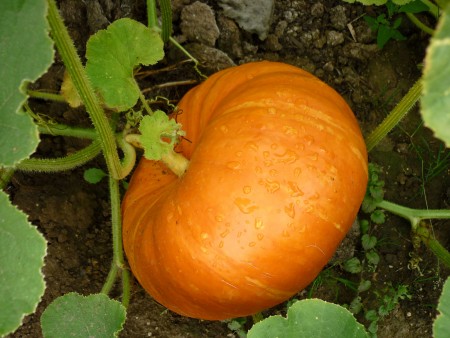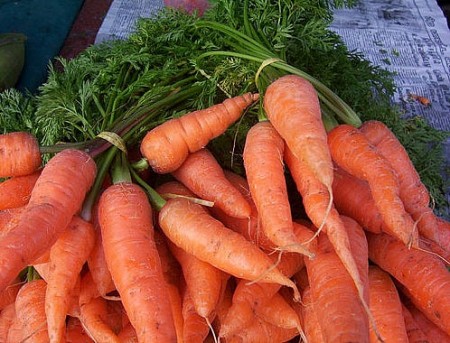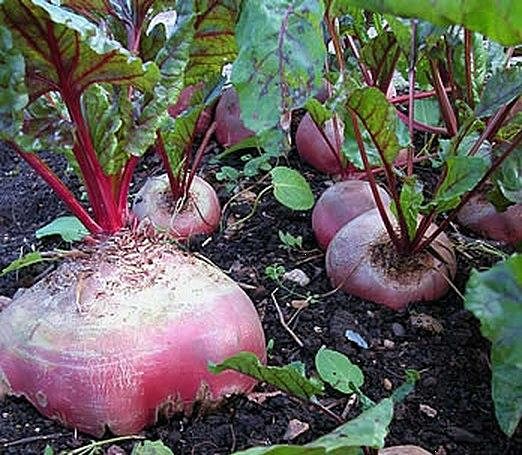Varieties of vegetables have different taste qualities: some accumulate more sugars, others less. And that's okay. Not all people like sweets. And for some, sugar is contraindicated for health reasons. How to grow sweet pumpkin, beets and carrots.
For lovers of sweet pumpkins
Among the sweet ones recommended for cultivation, the following varieties of pumpkin are distinguished:
- Atlant
- Winter sweet
- Large-fruited
- Azure
- Chit
But this does not mean that by sowing the seeds of the named varieties, you will get a harvest of sweet pumpkins. You will have to look for the variety that will appeal to you on your site, and its fruits will suit your taste.
Which of the sown varieties will please you will have to be determined over the course of a season, because the taste of vegetables depends not only on genetics, but also on care and soil. For example, excessive watering negatively affects the taste.
Of course, there are dry seasons when even pumpkins grow poorly without irrigation, but you can always reduce watering a little. It is possible to water less frequently in areas where the soil is regularly loosened and mulched.
The fruits will not be sweet if the pumpkin grows in the shade. Our plots are small and in order to find a place for pumpkins, it happens that they are sown between the rows of the garden. Under the shade of trees, the pumpkin may not set fruit, and if it does, they will not pick up enough sugars.
Fruits that set and grew in cool weather (autumn) do not accumulate the required amount of sugars. Fertilizing with phosphorus-potassium fertilizers and microelements improves the taste of vegetables. Moreover, it is better to use a complex of microelements. Foliar (leaf) feeding is effective.
Growing Sweet Carrots
Lack of phosphorus-potassium fertilizers, boron, excess nitrogen in fertilizing are the main reasons why carrots and beets grow unsweetened. Beets also need sodium for their sweetness.
Just like pumpkins do not accumulate enough sugars in root vegetables, if they grow in the shade, they are watered too much.
Root crops like soil that is loose and nutritious, but adding fresh organic matter to these crops is contraindicated. When digging the area where it is planned to sow root crops, add a tablespoon of superphosphate and potassium sulfate.Instead of purchased mineral fertilizers, you can use wood ash - up to a glass per square meter. m.
To ensure that plants receive all the necessary nutrients and form high-quality, tasty root crops, complex fertilizers with microelements can be used to feed them. There are even special fertilizers for root crops.
As with pumpkin, the taste of carrots depends on the variety. Choose varieties and hybrids with a high sugar content, test them on your plots. As a result, you will find “your” varieties that will satisfy you in taste, appearance, and yield.






 CUCUMBERS NEVER GET SICK, I'VE BEEN USING ONLY THIS FOR 40 YEARS! I SHARE A SECRET WITH YOU, CUCUMBERS ARE LIKE THE PICTURE!
CUCUMBERS NEVER GET SICK, I'VE BEEN USING ONLY THIS FOR 40 YEARS! I SHARE A SECRET WITH YOU, CUCUMBERS ARE LIKE THE PICTURE! You can dig a bucket of potatoes from each bush. Do you think these are fairy tales? Watch the video
You can dig a bucket of potatoes from each bush. Do you think these are fairy tales? Watch the video
 How our fellow gardeners work in Korea. There is a lot to learn and just fun to watch.
How our fellow gardeners work in Korea. There is a lot to learn and just fun to watch. Eye trainer. The author claims that with daily viewing, vision is restored. They don't charge money for views.
Eye trainer. The author claims that with daily viewing, vision is restored. They don't charge money for views. A 3-ingredient cake recipe in 30 minutes is better than Napoleon. Simple and very tasty.
A 3-ingredient cake recipe in 30 minutes is better than Napoleon. Simple and very tasty. Therapeutic exercises for cervical osteochondrosis.A complete set of exercises.
Therapeutic exercises for cervical osteochondrosis.A complete set of exercises. Which indoor plants match your zodiac sign?
Which indoor plants match your zodiac sign? What about them? Excursion to German dachas.
What about them? Excursion to German dachas.